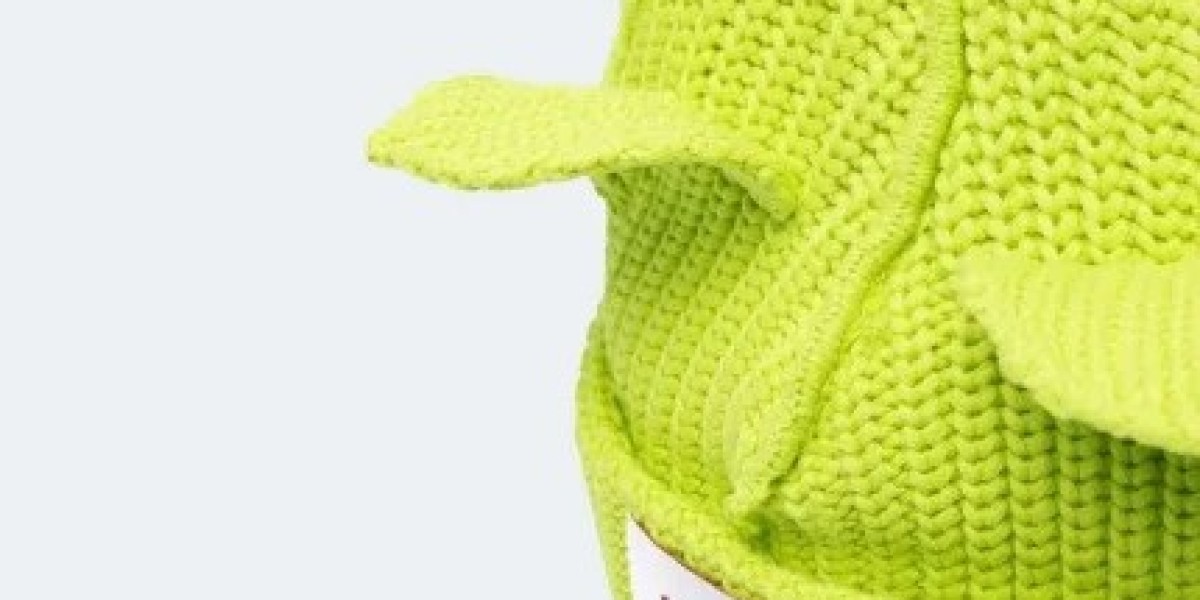The Birth of a Cultural Icon
The Loverboy hat isn’t just an accessory—it’s an emblem of rebellion, fluidity, and fearless creativity. Born from the mind of Charles Jeffrey, the visionary behind the cult-favorite label Charles Jeffrey LOVERBOY, the hat is more than wool and threads stitched into shape. It’s a wearable manifesto. For those deeply rooted in fashion’s avant-garde subcultures, the Loverboy hat represents the blurring of gender boundaries, the clash of punk attitude with artistic refinement, and the unstoppable rise of queer aesthetics into the mainstream.
When Jeffrey first showcased his signature headpiece—a long-eared, knitted hat inspired by folklore, club kids, and theatrical fantasy—it felt like something between a rabbit’s ears, a jester’s cap, and a knight’s helmet. It was confusing, radical, playful—and immediately iconic. In a world oversaturated with copy-paste trends and mass-produced statements, the Loverboy hat cut through the noise like a scream in a library. It demanded to be seen, understood, or rejected—but never ignored.
Why the Loverboy Hat Speaks Volumes Without Saying a Word
The hat’s unmistakable silhouette is one part fantasy, one part protest, and one part wearable art. You might see a pair of exaggerated ears that hang low like elongated bunny ears, but they’re also visual metaphors—extensions of one’s identity, one’s queerness, one’s otherness. They challenge the neat boxes society tries to fit people into. The wearer of a Loverboy hat isn’t trying to blend in—they’re crafting a new space entirely.
Its loudness is intentional. Whether it’s in rich wool, vibrant prints, or unconventional knits, the design echoes the riotous spirit of London’s underground clubs where Jeffrey first found inspiration. These weren’t just party spaces; they were sanctuaries for misfits, outcasts, artists, and lovers—a new generation of punks not defined by mohawks or spikes, but by color, gender fluidity, and boundless self-expression. The Loverboy hat, in this context, is a relic of that resistance.
Charles Jeffrey: The Shaman of Style
To understand the hat, you have to understand the man. Charles Jeffrey isn’t a typical fashion designer. He is part performance artist, part activist, and part club kid royalty. His Scottish roots bring a deep understanding of myth and identity, while his time in London’s raucous queer nightlife sharpened his taste for the chaotic, the beautiful, and the confrontational.
Jeffrey’s design language is deeply personal. He’s spoken openly about battling mental health challenges, using art as therapy, and channeling rage, heartbreak, and euphoria into his collections. The Loverboy hat, then, is not simply “cute” or “funny”—it’s often a visual scream. It’s the child of heartbreak and healing. When models march down the runway in his creations—face paint smeared, hats drooping like deflated dreams—they're not just modeling clothes; they’re telling stories.
A Unisex Anthem for a Genderless Future
One of the most remarkable aspects of the Loverboy hat is its sheer refusal to be gendered. While most hats are sectioned off in binary categories—“men’s beanies,” “women’s berets”—the Loverboy hat flips that script. It is unisex not in a sterile, neutral way, but in a bold, defiant celebration of gender fluidity. It leans into the flamboyant, the fabulous, and the absurd—all of which have historically been denied to masculine-presenting individuals.
Whether you’re wearing it with a pleated skirt, a tailored suit, or nothing at all, the Loverboy hat becomes a kind of statement crown. It says: “This is me. All of me. And I’m not toning it down for your comfort.” It’s fashion as identity, and identity as revolution.
The Club Kid Renaissance
The Loverboy hat has found loyal followers not just in fashion circles, but among musicians, drag artists, and cultural tastemakers who orbit the club scene. It’s a symbol of nightlife renaissance—the resurgence of spaces where creativity thrives under neon lights and pounding bass.
When worn on stage or on the dance floor, the hat takes on a new energy. It bounces. It sways. It becomes a character in its own right. Artists like Olly Alexander, Bimini Bon-Boulash, and even global pop stars have incorporated the hat into music videos and performances. It’s theatrical. It’s dramatic. It’s queer in the best way possible.
And that’s no accident. The hat’s exaggerated proportions are perfect for performance, both literal and metaphorical. It encourages the wearer to embody a character, to explore new dimensions of themselves. In a way, it’s not just fashion—it’s drag.
From Runways to Sidewalks: Its Global Appeal
Though it was born in the underground scenes of London, the Loverboy hat has traveled far. From Tokyo to Berlin, New York to Paris, fashion-forward individuals have embraced it not just as a trend, but as a token of individuality. Its presence on runways has helped solidify its status as a cult classic, but its migration onto the streets proves its versatility and staying power.
You’ll find it on students pairing it with oversized sweaters and boots, skaters flipping tricks with its ears flapping behind them, and even on luxury influencers styling it with tailored coats and chunky jewelry. The hat resists easy classification—it works in grunge aesthetics, maximalist fits, and even minimalist wardrobes as the one “odd” item that ties the whole look together.
It is an accessory that does not fade into the background. It grabs the spotlight and dares you to come along for the ride.
Sustainability Meets Subversive Style
Charles Jeffrey and the Loverboy brand have also taken steps toward sustainability—a crucial aspect in modern fashion. Many of the hats are handcrafted, using upcycled materials or ethically sourced wool. The brand leans into traditional techniques, employing Scottish artisans and local manufacturers whenever possible.
This blend of craft and conscience adds another layer of depth to the hat’s allure. It’s not just about making a visual impact—it’s about making a responsible one. For a generation increasingly concerned with where their clothes come from, the Loverboy hat delivers on both aesthetics and ethics.
Collectible, Coveted, and Constantly Evolving
One of the reasons the Loverboy hat retains its cultural weight is because it never stays static. Each season brings new variations—different textures, patterns, colors, and embellishments. Some feature tartan prints in a nod to Scottish heritage, others lean into fantastical elements with embroidery or contrasting ears.
Limited releases have made certain pieces highly collectible. Like a piece of contemporary art, owning a particular iteration of the hat means owning a fragment of fashion history. It creates a community of wearers who trade, cherish, and style the hat in infinite ways, all while adding their own flair.
The Verdict: More Than a Hat
To the casual eye, it may look like a quirky headpiece. But the Loverboy hat is a tapestry of emotion, history, and rebellion. It’s wearable armor for the outcast, a flag for the flamboyant, and a celebration for those who dare to be different.
It straddles the line between the runway and the rave, between high fashion and underground grit. Its magic lies in its contradiction—it’s soft but loud, playful yet political, personal yet universally relatable. In a time when identity is often commodified, the Loverboy hat refuses to conform. It exists unapologetically.
And that’s what makes it essential—not just for fashion lovers, but for lovers of life on the fringe, on the rise, and in full color.








